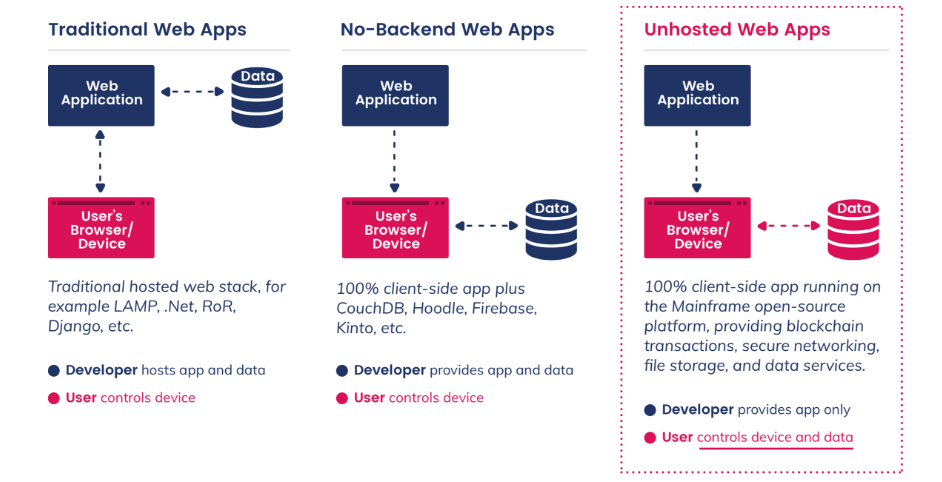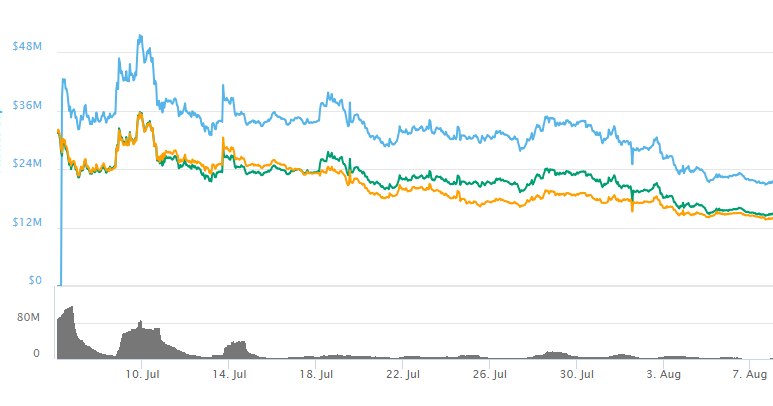Latest news about Bitcoin and all cryptocurrencies. Your daily crypto news habit.
It is hard to ascertain whether the digital age was born out of the internet or vice versa. One thing that is for certain is that we now live in a new epoch. More than half the people on the planet have regular access to the internet, which presents an overwhelming opportunity for innovation, creativity and interconnection.
This unrivaled opportunity comes with its own set of challenges. Multiple intermediary parties now have access to users’ information. Such data must be handled carefully and responsibly. Whether it be Sony or Facebook, user privacy is hardly afforded due – or for that matter, any – protection. More disconcerting is when government agencies or private malicious agents get involved.
To combat this, the Mainframe platform looks to provide unparalleled security. It primarily focuses on:
- End-to-end encryption of data for privacy
- Hiding of internode relationships for surveillance resistance
- Enabling open communication without fear of censorship
Overview of the Platform
Mainframe works off the central tenant that a user should have access to and control over their own online data. They look to provide safety for that data and the tools used to share data without fear.
The network uses advanced encryption protocols so as to guarantee data integrity, be it peer-to-peer or broadcast to a group.
Using a distributed-decentralized network makes a node almost invisible, thus allowing messaging that is almost impossible to monitor or identify.
There is an active incentive structure to promote and reward nodes to provide bandwidth for packet relay and storage, data services, and file storage, among other things. This ensures support and continued growth of the decentralized infrastructure.
The network’s construction fragments application data throughout the network. This undercuts the cost of managing infrastructure while making it incredibly hard for censors to track and access critical information.
The Mainframe platform is developed to work everywhere. This interoperability is intended for seamless integration with any application, network, or blockchain – eventually.
Key Features
Today, compromised data and service outages are no longer rare occurrences. Mainframe works to provide protocols for one-to-one and one-to-many encryption, at the transport layer level.
Even when fully encrypted, messaging services utilize some sort of centralized infrastructure to operate or store customer data. In contrast, the decentralized and distributed Mainframe architecture addresses the threat of data breaches and negates any risk of service outage.
Another added benefit is the pathway to improved scalability for the platform. Mainframe’s service layers have been designed to intrinsically support the development of fully decentralized applications. The system has redundant shards of data distributed across multiple nodes. This ensures high resilience of the network.
How It All Works
The nodes on the network have an asymmetric key pair linked to them. These keys are used to decrypt and encrypt data. For this, the public key is obtained from a prior exchange of contact information. Packets intended for groups are sent in multicast mode. Mainframe provides protocols for shared key negotiation to avoid duplication of sensitive information in the metadata.
Dark routing is used to hide information about who is communicating with whom. This is done by configuring routing based on Holbrook’s work on the PSS protocol. Packets are routed to each node without fully disclosing their destination address. As packets are not fully addressed, session management is more intricate. Mainframe provides session management protocols that help applications keep track of and initiate separate data streams.
Peer nodes enter into an agreement to provide reliable delivery and receipt of the packets. These nodes track bandwidth usage; once it exceeds a certain threshold, the peer issues an “invoice” and a “check” is issued to the peer. This is done by cryptographically signing a piece of data that can be used as an input to the checkbook contract. This check can either be encashed or withheld for later use.
The Mainframe network is both distributed and decentralized. This means that as participants in the network join and leave, the network has the ability to grow or reroute around them. The Kademlia network protocol ensures that nodes try to discover new pathways. No entity (even Mainframe itself) will be able to control or disrupt the operation of the network.
Mainframe is designed to make it easy for any application to make use of the platform. Developer SDKs for working with Mainframe code on all popular platforms and languages are constantly being worked on. The platform is looking to provide oracles and smart contracts for interacting with the token-based incentivization layers on multiple blockchains. Finally, there is a strong focus on accelerating adoption by focusing on developers, providing them with tools and support.
About the Team
The team consists of 12 full-time employees based in multiple sites.
Mick Hagen is the CEO/Founder. He studied Computer Science at Princeton. He has been instrumental in helping Zinch grow to become an international startup that serves millions of students and 800+ colleges and universities worldwide.
Carl Youngblood is the CTO. He has a Masters in Computer Science from the University of Washington. With over two decades of experience as a full stack engineer, he specializes in highly scalable web applications. His involvement with blockchain technology goes back to 2010, when he delved into Bitcoin and invested in the Ethereum presale.
Brad Hagen is the Head of Business Development and Sales. He has a proven track record of helping grow early-stage companies. He predominantly focuses on sales, business development and strategy. This has held him in good stead at Zinch, Lendio and Brandr.
Austin Craig is the Head of Marketing. His financial acumen shone in 2013 with the centerpiece of his claim to fame. He and his wife documented the first three months of their marriage, where they only used bitcoins, in the film Life on Bitcoin.
David Sun is the Community Manager. He is a passionate crypto-advocate. Having studied Communications at the University of Washington, he is an advocate for privacy and freedom of communication. David is experienced at multi-language community work for global blockchain projects.
Token Performance Details
Introduced into the market earlier this month, Mainframe(MFT) tokens were initially valued at US$0.018 per token.
Mainframe token lifetime performance chart (courtesy of CoinMarketCap)
Due to the newness of its associated product, it is still difficult to assess the true potential of this token. On August 9, the price of a single MFT token stood at $0.009.
Final Thoughts
Mainframe delivers a platform for applications that is resistant to trackers, hackers, and any sort of external censors.
Owing to the daily conversations about privacy and concerns over living in a country with diminishing personal space, it would not be surprising to see this service continue to do well this year.
If you are interested in investing in Mainframe, MFT trading pairs are currently available on DDEX, IDEX, and OTCBTC.
Disclaimer
The views and opinions expressed in this article are solely those of the authors and do not reflect the views of Bitcoin Insider. Every investment and trading move involves risk - this is especially true for cryptocurrencies given their volatility. We strongly advise our readers to conduct their own research when making a decision.



